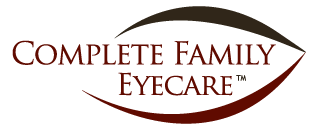Can’t see up close? Tired of Bifocals or Cheaters? Contacts Lenses can be an option for better near vision
For those of us who are getting “less young,” the loss of near vision (presbyopia) can be one of the most frustrating parts of the aging process. For those of us who have never worn glasses until the forties, the inability to see up close can be especially challenging. Current contact lens and glasses patients can also have significant issues in trying to find the best option to correct their near vision. If you are looking for other options other than glasses or readers to help with your near vision, contact lenses may be an interesting option to consider.
Never worn contacts? Not a problem as we offer classes on insertion, removal, and contact lens safety.
Traditionally, the most common way to see up close with contacts is to wear reading glasses over the contact lenses. Usually, these “cheaters” can be bought at your local drug store for a nominal cost and come in varying degrees of ugliness. Prescription reading glasses with attractive frames and quality lenses specifically designed for you can also be purchased from our clinic. Using this “distance contacts with readers” method will give patients the best distance and near vision as both eyes are fully set for distance or near and vision is not compromised. However, the nuisance of wearing the readers can be a significant problem.
Monovision is an option that can significantly reduce the need for reading glasses by essentially building a reading glass power into one of the contact lenses allowing that eye to see up close and the other eye is focused for distance. When first presented with this idea, most patients look at me with a great deal of skepticism. This is understandable but with a little bit of practice and motivation monovision can be a great and inexpensive option. For those patients with good distance vision and not currently wearing contact lenses at all, a contact lens can be worn in only one eye. Some patients (like myself) find monovision to be a great option and wear it every day. Other patients will use it only for going out to dinner on Saturday night when they don’t want to wear their readers and still other patients find it to be unacceptable. It is definitely something that you will need to try before making a decision on what part of your life that you may find it beneficial.
Multifocal contact lenses are also available to help with near vision problems. MF contacts are designed with certain areas of the contact lenses to be dedicated to distance vision and other areas to near vision so basically you are looking through distance and near vision at the same time. For some patients this is a better option than monovision as both eyes are set for distance and near but other patients report that the distance is not as clear as they would like as the near prescription is mixed in with the distance.
All of these contact lens options are available in soft or rigid gas permeable options. They are also available in the single use soft option which has become the contact lens option of choice for eye health and patient convenience. Although there are contact lens options to help the presbyopia patient, no contact lens prescription will be equivalent to turning back the clock 20 years. Often times patients have to try different options and decide which option they like the best or dislike the least. Please call for an appointment if you would like to try any of these contact lens options.
Ask us about Monovision Contacts
Thanks
Dr. Steve
